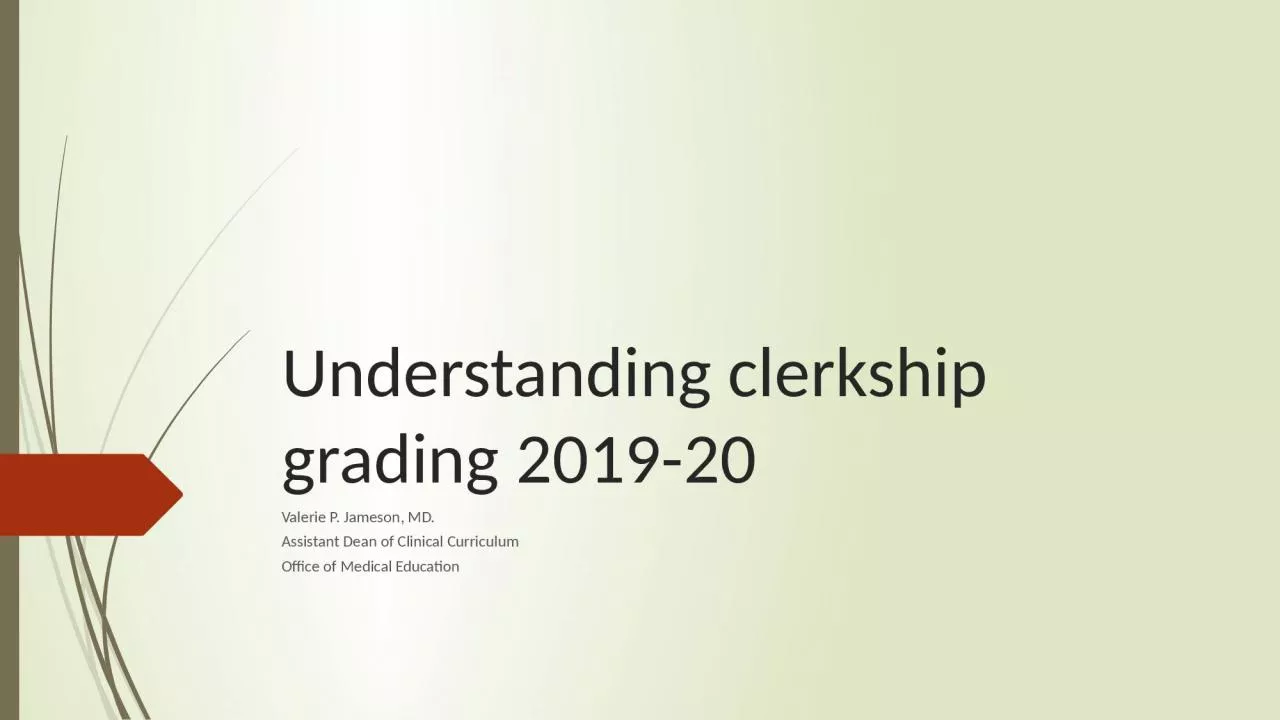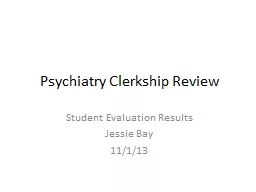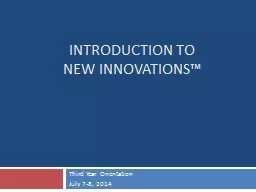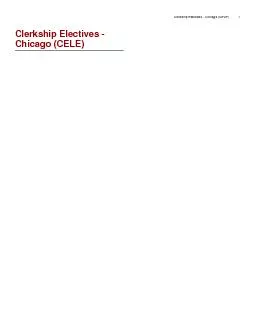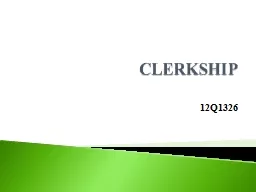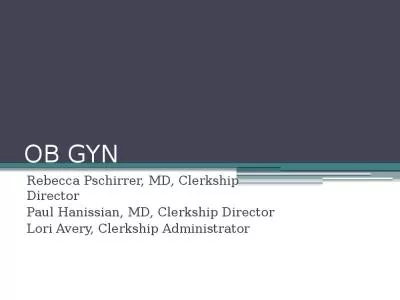PPT-Understanding clerkship grading 2019-20
Author : jacey | Published Date : 2024-03-13
Valerie P Jameson MD Assistant Dean of Clinical Curriculum Office of Medical Education Why grade at all Grading is the summative ultimate feedback to student performance
Presentation Embed Code
Download Presentation
Download Presentation The PPT/PDF document "Understanding clerkship grading 2019-20" is the property of its rightful owner. Permission is granted to download and print the materials on this website for personal, non-commercial use only, and to display it on your personal computer provided you do not modify the materials and that you retain all copyright notices contained in the materials. By downloading content from our website, you accept the terms of this agreement.
Understanding clerkship grading 2019-20: Transcript
Download Rules Of Document
"Understanding clerkship grading 2019-20"The content belongs to its owner. You may download and print it for personal use, without modification, and keep all copyright notices. By downloading, you agree to these terms.
Related Documents

